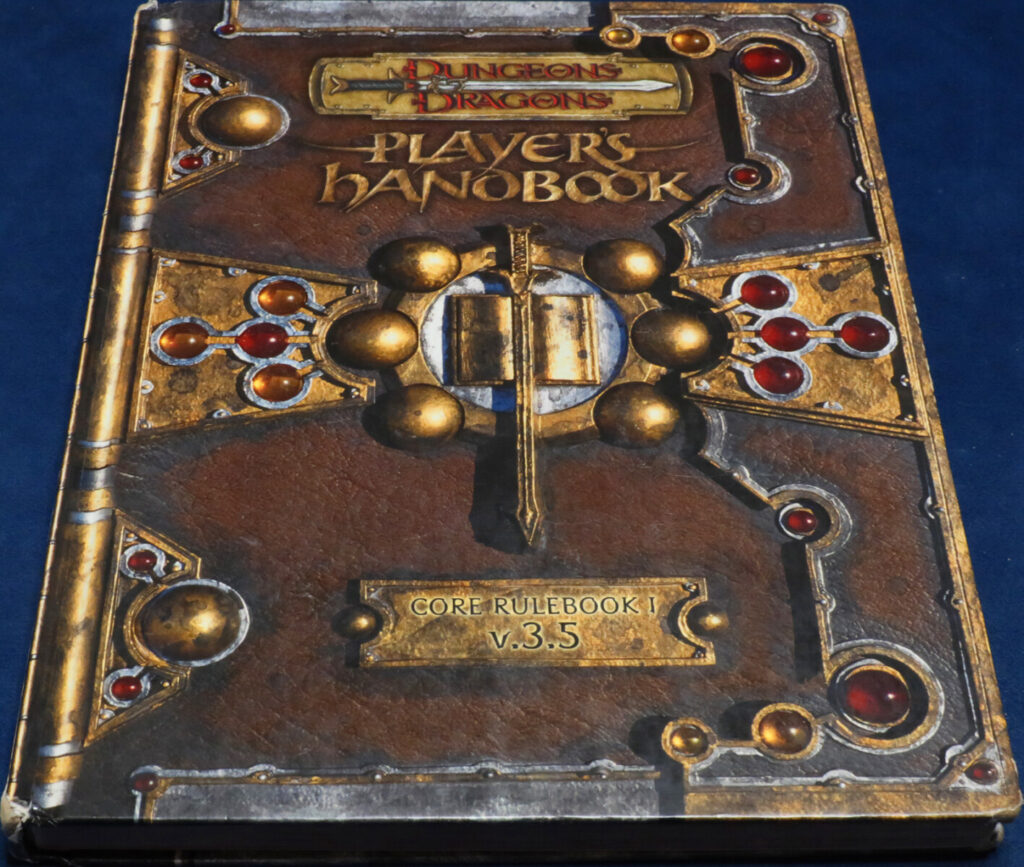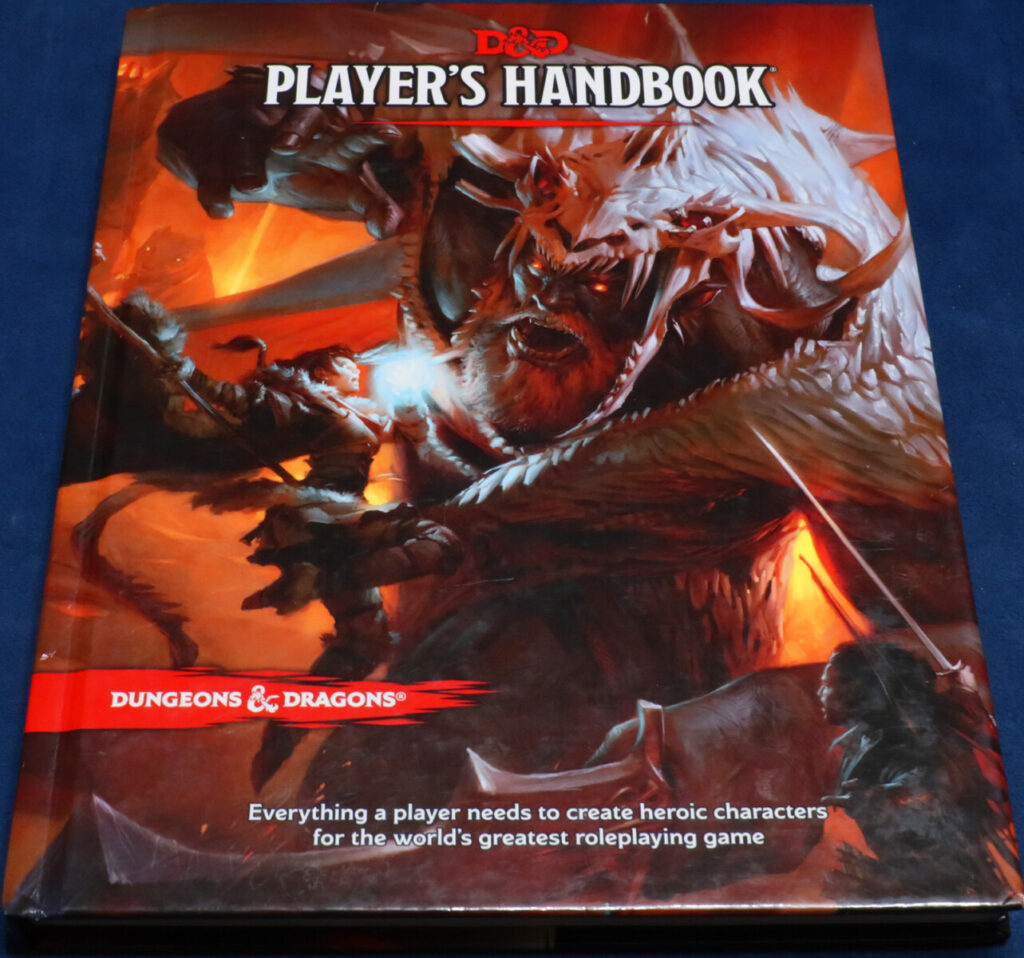
Lawful Neutral (LN) is often portrayed in Dungeons & Dragons as stubborn, challenging, and hard to deal with. However, it does not always have to be this way; there are plenty of avenues to play Lawful Neutral that won’t have you fighting against your party. Understanding how the Lawful Neutral alignment works open up many avenues to particular roleplay classes and coexist in the realm of D&D.
The Lawful Neutral alignment follows a personal code, honor, tradition, laws, or orders above all else. Good, evil, and morals cannot obscure the judgments of a lawful neutral character. Organization and order are essential in their worldview, such as those enforced by a strong government.
Whether you want to be the personification of a “Judge” alignment or be mysteriously following your own code, this D&D alignment guide will open up a new view of playing a Lawful Neutral role. You’ll get to know the Lawful Neutral alignment, its origin and transition from D&D 3e to 5e, fictional characters to relate to, and how Lawful Neutral compares to other alignments.
The Origin And Development Of The Lawful Neutral Alignment

Understanding the Lawful Neutral (LN) alignment begins with understanding its origins in AD&D and how it developed through the 3rd and 5th editions.
Lawful Neutral In AD&D
In the Advanced Dungeons & Dragons (AD&D) player handbook, on page 33, the Lawful Neutral alignment originally referred to beings that “consider regulation as all-important.” Still, neutrally existing between saintly and diabolic hints that characters may find a subtle playing field between the two through any potential series of events in campaigns.
Overall, AD&D’s variant of Lawful Neutral has a high-end goal because they believe that good and evil are unimportant in the quest for a meticulously and flawlessly regulated world.

Lawful Neutral In D&D 3.5 Edition
Page 105 of the D&D 3.5e Player’s Handbook describes lawful neutral characters as being the “Judge” and somewhat more human and following “law, tradition, or a personal code.” This signifies a change from the more cosmic alignment history to one more suitable for authentic, unique characters.
To misquote the original text on page 105, “A lawful neutral individual behaves in a manner prescribed by law, tradition, or personal code. She places a high value on structure and order. She could support a powerful, well-organized government, or she might favor order for everyone and live by a code or standard.
The ideal alignment is lawful neutral since it indicates dependability and honor without being a zealot.“
The excluded passage was a description of a character named Ember. She was described as a monk in the 3.5e LN alignment who kept her discipline without succumbing to evil or poverty’s demands. While Ember is a fantastic example of a lawful neutral character, players must remember that Ember is merely one of many paths a lawful neutral character may take.

Lawful Neutral In D&D 5th Edition
According to the D&D 5e handbook on page 122, “Law, a personal code, or tradition can guide the behavior of Lawful Neutral characters.” While there may have been a significant shift from AD&D to the 3.5 edition, the 5th edition remains similar to 3.5e.
However, some of the few additions for the Lawful Neutral alignment include introducing new lawful neutral deities, potentially expanding the roleplaying horizon. That said, unlike Lawful Good, Lawful Neural has a more flexible playing field, especially when you separate “Lawful” and “Neutral.”
The Lawful Neutral alignment in 3.5e and 5e indicates prioritizing your personal or jurisdictional code over any overarching morality. Nothing about how you should react to those who breach your principles, or even how strongly you should feel about them, is inherently required by the alignment.
This implies that you don’t have to deputize yourself and bring justice around every corner you take.
How the “Neutral” Characteristic Effects Lawful Neutral
The two components of the “Lawful” and “Neutral” alignment each define a distinct characteristic.
- The first term, “Lawful,” does not only particularly relate to regulations. It’s how someone chooses to pursue their chosen path, whether it be through tradition, a personal code of conduct, or the laws or rules of an organization. It also alludes to the alignment’s view of how society ought to function.
- The moral standing of the alignment on the good-evil axis is indicated by the second feature, “Neutral,” which allows LN roles to be more flexible. For example, neutral characters generally respect and follow laws (if only to avoid legal issues).
Still, even though True Neutral characters have their own objectives and principles, neutrality entails being willing to assist other characters, regardless of whether they hold different values. Despite not being evil or inherently good, neutral characters can still be interesting.
LN characters, therefore, may lack a strong sense of good and evil and may instead seem cold-hearted or heartless or “have an essential sense of good but not enough to always pursue it.” But this is not always the case.
As mentioned in AD&D, the LN alignment exists between the saintly and diabolic spectra. And that aspect alone has not changed much through 3.5e and 5e but instead broadened the playground.
This doesn’t suggest that Lawful Neutral characters lack morality or are immoral or amoral. Instead, it just means that their moral obligations are subordinate to whatever their code, tradition, or lawful system mandates. They frequently have solid ethical principles but are determined mainly by their worldview rather than by a dedication to good or evil.
- For example, an LN cleric who worships a god of death may not save dying civilians since it goes against her god’s will. But the cleric may want to save a child since allowing a child to die may go against their code, and then pray to their god for forgiveness.
One of the most crucial roleplaying decisions you must make as a Lawful Neutral character is why you believe what you do.
An Example Of A Lawful Neutral Personality Type
Depending on the code they adhere to or the laws that govern them, Lawful Neutrals can exhibit practically any personality. However, if you’re looking for inspiration or a part to play with your new LN character, an introverted, observant, thinking, and judging (ISTJ) personality type is a surefire winner.
Being an ISTJ means you are rational, realistic, diligent, and excel at completing orders. You have a strong sense of resolve and the capacity to set and attain goals. You may also think about issues in the long run and predict how they will develop over time. Finally, the ISTJ personality type tends to be reliable, obedient, and trustworthy, much like Lawful Neutral characters.
Roleplaying A Lawful Neutral Alignment
Your alignment will determine how you conduct yourself as a Lawful Neutral character. For example, certain behaviors are more consistent with a Lawful Neutral persona than others.
You can act in ways inconsistent with your alignment, but doing so can cause your character to start doubting who they are. They could feel uneasy or annoyed with themselves for behaving in such a manner.
Five honorable LN examples include:
- Ensuring the party gets healed before you do
- Notifying the authorities of unlawful activity
- Facing a more superior adversary
- Allowing an enemy who is unarmed to take up his weapon
- Agreeing to take prisoners
Five dishonorable LN examples include:
- Fighting dirty
- Performing a crime
- Escaping from a fight that is clearly not going well
- Murdering a host who has fed or housed you
- Ignoring the needs of allies
Like any persona, Lawful Neutrals can have a wide range of personalities. But the majority of these characters share a few characteristics, such as:
- Being Honorable
Lawful Neutrals need to uphold their code. Honoring their belief is the most important thing to them. The rigid devotion to the laws of whichever society they have allied themselves with is their notion of honor.
- Being Strict
The law has no spirit. They will uphold the law to the letter and anticipate that others will do the same.
- Being Obedient
LN characters will abide by all applicable laws and regulations.
- Being Authoritative
Lawful Neutrals appreciate an authoritarian setting where all regulations are observed and demand that everyone else respect the law.
A thrilling character development arc that demonstrates how your character changed alignment may begin if you commit multiple consecutive actions that are inconsistent with your alignment. That said, let’s take a close look at how LN coexists in the D&D realm.
How Lawful Neutral Reacts To The Social Order
A society with a Lawful Neutral government has a system of codified rules that are strictly adhered to. Those in charge often demand that both adventurers and locals abide by all laws and ordinances. People in a law-compliant, equitable society are enthusiastic designers of complex bureaucracies and taking by the law.
You will find that Lawful Neutral characters are pretty much one person’s version of a Lawful Neutral town.
Some actions that align with the Lawful Neutral characters and NPCs include:
- Respecting any personal agreements and contracts
- Obeying the rules their family’s elders set down out of respect for them
- Won’t betray a member of the family
- Respects the community’s and country’s laws and authorities
- Support the country’s legal systems regardless of personal discomfort
- Won’t hurt people for profit
- Is not concerned about the poor
If you decide to play a Lawful Neutral character, you must strictly abide by all rules and laws. If in a position of power, lawful neutrals will scrupulously enforce fair and unjust laws because they want everyone else to abide by them.
But keep in mind that not all laws are like way. Lawful Neutrals adhere to an unbending code of honor. They are devoted to their own set of rules and personal morals. As a result, they might not understand the significance of other legal systems. Your Lawful Neutrality must consistently uphold the rules of the system they serve, so it’s crucial to understand their background and the laws or code they support.
Character Background Ideas With A Lawful Neutral Alignment
Due to their inherent personal code, Lawful Neutral characters have one of the highest degrees of depth of all alignments. And to make this personality realistic, players should do two things:
- Define the character’s code in detail
- Firmly embed the code in their history
A really original and striking background may be created by knowing what your code is, what it does, and where it comes from. Here are some superb examples if you need some motivation to spark a good background:
- Vigilante – Personal Code
You experienced or saw a severe injustice, whether a serious crime or another uphill struggle caused it. You have witnessed instances when the law is ineffective, cannot apply, or is being misused.
Whether the common law recognizes them or not, it is your duty to defend the helpless, the innocent, and anybody else you feel deserving. When possible, you follow the law, but your internal moral compass and ethics always come first when determining how to behave.
- Pirate – Pirates’ Code
You disregard the law. In reality, you often breach it because you would do everything to survive. Assuming any of them survived the shipwreck, you and your crewmates adhere to a stringent set of rules, so you’re not some small-time criminal. When you’re on land, you may limit your theft to people who wouldn’t notice anything missing or to those who genuinely deserve it.
You never steal from your mates, no matter who your objectives are, and if you get caught, keep your mouth shut. The Pirate Code is similar to the “honor amongst thieves,” mandating that pirates show respect for one another. The deliberate pursuit and scuttling of other pirate ships are prohibited. And killing an opponent who has surrendered is forbidden.
- Soldier – Law and Order
For as long as you can remember, war has been your way of life. As a young person, you underwent training, studied the use of weapons and armor, and acquired the fundamentals of survival, including how to survive in combat. You may have been a member of a standing national army or a small militia that gained notoriety in a recent conflict.
But one harsh lesson you’ve learned from countless battles is that you must live by the laws your supreme commander taught you, the laws of the kingdom and your own country. It’s what kept you alive this long and honed both your intellect and your blade.
What Classes Are Lawful Neutral?
Although certain wizards and monks are the archetypal classes for Lawful Neutral alignment, they can also be of any other alignment. In fact, many roles can be Lawful Neutral. Besides the soldier who was mentioned as a background example, other examples include:

Wizards
The stereotypical wizard is often a sage who is Lawful Neutral. They adhere to the law (lawful) and frequently pursue the knowledge of magic for their own research (Neutral).
They spend their time researching magic and ancient relics, not changing the world for the better or worse; therefore, moral dilemmas are barely significant to them. However, they may get involved in a series of events if anything threatens the balance of the world.

Monks
The power to magically harness the energy that flows in their bodies unites all monks, regardless of their discipline.
This energy permeates everything a monk does, whether it is channeled as an impressive demonstration of fighting skill or a more subtly focused concentration on defensive abilities and agility.
Monks are usually always lawful in alignment and make an excellent option for an LN character because of the regimented lifestyle of a monastic community and the discipline needed to harness ki.

Rogues
Even though most rogues are thieves or assassins, they may also be covert agents, which would go nicely with an LN alignment.
The agent does not engage in immoral behavior without caring about immediate morals. The agent may grow worried if the organization pursues unbalanced extreme moral or immoral behaviors rather than being content with defending and furthering the interests of the organization with which they are associated.
An assassin with a creative background that does not kill for profit could also work as an excellent Lawful Neutral character. Always honoring the contract and being extremely strict, cold, calm, and calculated.
Lawful Neutral Compared To Other Alignments
Lawful Neutral characters are outlined by their code, and it is best to frame their experiences in that context while roleplaying them. Most frequently, their code is internal, which means they are certain that only they are correct and that everyone else is misguided.
It’s hard to break through a Lawful Neutral character’s protective wall. But once you do, you’ve got a loyal and exciting companion on your side. Still, there are a lot of variances between Lawful Neutral and other alignments.
Lawful Evil Vs. Lawful Neutral
Both Lawful Evil and Lawful Neutral personalities adhere to rigid standards, traditions, and laws, but for opposite purposes.
- Lawful Evil individuals will support laws that serve their own purpose, usually the accumulation of riches and power. They will desire laws that provide their dictatorship an advantage in society. A Lawful Neutral character will be angered by a Lawful Evil character’s desire to manipulate laws to promote their own ego and cause.
Lawful Good Vs. Lawful Neutral
The nature of laws will be the primary source of conflict between Lawful Neutral, and Lawful Good beings.
- Lawful Neutral personalities are merely concerned with preserving or developing laws to address every foreseeable societal problem without compassion or moral judgment. In contrast, Lawful Good characters seek laws to protect the innocent and punish the wicked.
- A person with Lawful Good character may decide to support the good while breaking the law to do so. In comparison, a Lawful Neutral character will never breach the law in the service of good or evil but may change or break it in the rare case that they find a more effective method to preserve order.
Neutral Evil Vs. Lawful Neutral
Neutral Evil and Lawful Neutral characters are significantly dissimilar and hardly ever get along.
- Neutral Evil characters are instantly perceived as a threat since they are driven only by self-interest and have little to no standards, codes, or guidelines for achieving it. A Neutral Evil persona could intentionally attack and deceive others, breach agreements, and engage in other evil deeds for amusement.
- Suppose a Neutral Evil character imposes on a Lawful Neutral character’s code or has a contract for its head. It could lead to quite an unpleasant situation, especially for the neutral evil character.
True Neutral Vs. Lawful Neutral
True Neutral characters and Lawful Neutral characters have similar moral stances. Both of these alignments have the propensity to repay treatment shown to them.
- Their perspectives on legitimate power and the social order are different. In the opinion of true neutral characters, legislation should be adhered to as long as doing so helps them personally or keeps them safe from penalty. As a result, since it serves their interests, following the law is often preferred by true neutrals.
- True Neutrals consider Lawful Neutrals overly obsessive in situational circumstances, while the latter consider True Neutrals a threat since they uphold the law only when it is convenient.
Neutral Good Vs. Lawful Neutral
Even if they disagree a lot, Neutral Good characters can get along with Lawful Neutral individuals – depending on the code or law they follow.
- Law and order, especially if used to restrict individual freedom, are no better than Chaos for a functioning society, according to Neutral Good. And as you may well imagine, Lawful Neutral will use any means to adhere to their code or laws, which can birth some challenging dialogues. So as long as the law does good, Neutral Good characters will adhere to them.
Chaotic Evil Vs. Lawful Neutral
Characters who are Lawful Neutral and those who are Chaotic Evil are utterly at odds with one another.
- Law and order are essential to the functioning of society for Lawful Neutral, but for Chaotic Evil, they should be entirely disregarded or utilized as a weapon to subjugate others.
- A Chaotic Evil character is fully self-centered, dishonest, and disloyal, and they don’t function well with any other alignment. Out of rage or just for pleasure, they will deceive others, take items that don’t belong to them and injure individuals. Lawful Neutral characters would oppose them if the opportunity presented itself.
Chaotic Neutral Vs. Lawful Neutral
Lawful Neutral and Chaotic Neutral can agree that they don’t give much thought to the spirit of good and evil. But the basis for their beliefs is where they diverge.
- Lawful Neutral characters are exempt from having to make moral decisions if they obey their code of conduct or laws. But, on the other hand, Chaotic Neutral elects to uphold no rules or norms while being ethically neutral. And believe that they can fully be free in this way.
- Chaotic Neutral individuals seldom have a larger, nefarious plan in mind, but their eagerness to forgo structure, values, and ideals makes the collaboration uncomfortable at best.
Chaotic Good Vs. Lawful Neutral
Chaotic Good characters tend to interfere with Lawful Neutral characters.
- Morally, Chaotic Good follows a positive path, but they usually violate most laws or codes that drive Lawful Neutral characters. People who are Chaotic Good do not necessarily follow structure, and LN individuals find it difficult to partner with those who hold beliefs that differ from theirs. Still, the story could turn out to be rather entertaining.
Fictional Characters That Are Lawful Neutral
Now that you understand how straightforward yet complex the Lawful Natural alignment can be, you’d be surprised at how many popular fictional characters fall into the Lawful Neutral category. So if you are looking for some examples of different backgrounds, ideas for coexisting with party members, or expand your wits and creativity, here are some excellent examples:
Judge Joseph Dredd – Judge Dredd

Known as the “Father of Justice” and chiefly concerned with upholding law and “order” in Mega-City One alongside his other judges, one of Judge Dredds’ many quotes is, “I am the Law!”
Although Dredd is not overly concerned with being good but instead focuses on fending against legitimately sinister forces and threats, Judge Dredd is the epitome of a Lawful Neutral. At the same time, some humor his law-craving nature and prefer to describe him as lawful law.
Samara – Mass Effect

Samara, from a game called Mass Effect, is very law-abiding, abiding by the stringent justicar code to the extent that she feels compelled to murder herself or one of her own daughters. However, she upholds her ethics as if it were an uncontrollable natural force rather than something she chose to do.
Even her lawful alignment precludes her from being an entirely romantic partner. She displays attraction for Shepard if he flirts with her sufficiently, but she won’t go any farther because of her code. Because she strictly adheres to the rules set forth by the code, she is neither good nor bad.
Genryusai Yamamoto – Bleach Manga And Anime

Genryusai Yamamoto virtually personifies this LN alignment for those who want to draw inspiration from an anime approach. “No personal justice is more important than world justice,” he asserts.
Yamamoto is tremendously committed to Soul Society and takes his responsibilities very seriously. He anticipates the same of the other Gotei 13 members. His devotion to the Soul Society is so intense that Yamamoto is prepared to sacrifice himself and the Captains under him to defeat Aizen. He feels that it is their responsibility to die if necessary for the Soul Society.
Eddard “Ned” Stark – Game Of Thrones

Considering his life and activities, Ned Stark proves to be Lawful and Neutral in more ways than most people initially imagined. Ned generally always acted honorably, but most of the time, he didn’t appear to ponder the moral ramifications of his choices. Instead, he carried out his duties because he was expected to.
While Ned was still alive, among the many honorable things he did, he promised his sister, Lyana Stark, that he would protect and care for her son, Aegon Targaryen. Ned brought Aegon up as his illegitimate son Jon Snow, for his protection and stayed true to the vow until the end.
Conclusion
Even though Lawful Neutral characters may be stern in following their chosen path, they can still prove loyal, honest, and reliable allies. They indeed possess a moral compass, but they regard a moral bias as a distant second to what their customs dictate. With a creative background and a detailed personal code or law, Lawful Neutral can be an exciting alignment for almost any character.
Other DnD Articles of Note
- Lawful Good D&D Alignment Guide
- Feats 5E Ranked
- Hit Dice 5E Guide
- DnD Monsters 5E – Our Top Picks
- Investigation vs Perception 5E
- Solo DnD Gameplay Guide
References
- D&D 5th Edition Players Handbook: anyflip.com
- D&D 3.5 Edition Players Handbook anyflip.com
- AD&D Player Handbook: archive.org
- 5e PDF Copy
- 3.5e PDF Copy
- Character backgrounds and history: fandom.com
Braden is a founder of Assorted Meeples and has been a gamer & writer with a vivid imagination all his life. Don’t believe us? Check out his excitement when meeting Goosebumps author R.L. Stine as a kid! An avid Magic: The Gathering spellslinger for over 15 years, you can always convince him to shuffle up for a game (or three!) of Commander.
